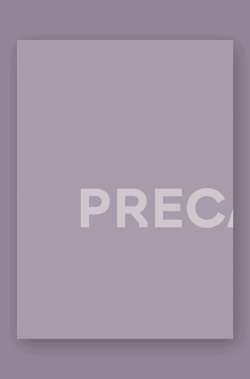Matter that disappears. Once upon a time...
May 26, 2008
Article written by Xavier González
Several books and articles have been published throughout the world on Jean Nouvel; he himself has regularly expressed his ideas in a large number of interviews and lectures. Yet, what is particularly striking is the extreme diversity of his projects, the sense that they are rooted in their place and in to the present time. For the past twenty years, Jean Nouvel has questioned the very basis of architecture by substituting the spatial discourse and the endogenous heritage of architecture for a sensitive approach that engages perception and emotion.
The singular nature of his professional career is based mainly on the development of a trilogy: the formulation of a concept, the questioning of the context and the crossover of disciplines. This last point allows, in turn, a “transfer of external knowledge” toward the architectural discipline, of which philosophy, science and art constitute the primary substrates. In spite of the apparent diversity of his projects, something which has earned him the reputation of an eclectic architect, it is nevertheless possible to distinguish two large architectural families: the significative projects and the emotional projects. The form, influenced a great deal by Robert Venturi, make reference to a culture based on the signs, the symbols, the products of the contemporary world: advertising images, graphic design, the aesthetics of the ordinary, comercial or industrial imagery etc... The latter appeal to the senses, to what is visual, tactile, to illusion... All the projects nevertheless have in common a play between light and matter, a search for what might be termed an “aesthetics of disappearance”. This disappearance can take on several forms: vegetation, transparency, immateriality, concealment, etc., but is always accompanied by the formation of a poetics of the situation and the creation of a process of confusion with the context. The space as stage-set then becomes the support for the narrative, and the materials become the support for what is sensitive, the “special effects”. Several books and articles have been published throughout the world on Jean Nouvel; he himself has regularly expressed his ideas in a large number of interviews and lectures. Yet, what is particularly striking is the extreme diversity of his projects, the sense that they are rooted in their place and in to the present time. For the past twenty years, Jean Nouvel has questioned the very basis of architecture by substituting the spatial discourse and the endogenous heritage of architecture for a sensitive approach that engages perception and emotion. The singular nature of his professional career is based mainly on the development of a trilogy: the formulation of a concept, the questioning of the context and the crossover of disciplines. This last point allows, in turn, a “transfer of external knowledge” toward the architectural discipline, of which philosophy, science and art constitute the primary substrates.
In spite of the apparent diversity of his projects, something which has earned him the reputation of an eclectic architect, it is nevertheless possible to distinguish two large architectural families: the significative projects and the emotional projects.
The form, influenced a great deal by Robert Venturi, make reference to a culture based on the signs, the symbols, the products of the contemporary world: advertising images, graphic design, the aesthetics of the ordinary, comercial or industrial imagery etc... The latter appeal to the senses, to what is visual, tactile, to illusion...All the projects nevertheless have in common a play between light and matter, a search for what might be termed an “aesthetics of disappearance”. This disappearance can take on several forms: vegetation, transparency, immateriality, concealment, etc., but is always accompanied by the formation of a poetics of the situation and the creation of a process of confusion with the context. The space as stage-set then becomes the support for the narrative, and the materials become the support for what is sensitive, the “special effects”.
Significant projects
It is impossible to exaggerate the importance of the influence Venturi has had on the intellectual and conceptual development of Jean Nouvel. In the same way as Venturi, Jean Nouvel continues the search for the architecture of the present, for its ephemeral novelty, for this modernity which is constantly renewed, which Baudelaire defined as “the transitory, the fugitive, the contingent, half of art where the other half is eternal and immutable” (1)
In Learning from Las Vegas, Venturi became the witness to and defender of a spontaneous popular culture; of a vernacular urban architecture, which overvalued the sign, symbol, metaphor. As in the case of “pop” artists, it highlights the existence of these parallel cultures, scorned or ignored, which fill the suburbs with disorder. Jean Nouvel has largely inspired this approach which is at once sociological and aesthetic, but unlike Venturi, he shows no nostalgia, no interest in historical quotations. Just the opposite, his command of inspiration is rather the new periurban landscape and his new aesthetics the shopping centres, factories, warehouses in industrial areas. The materials used are normally simple, inexpensive metal cladding, standardised and industrial products that cover simple boxes with basic shapes. These materials, moved out of their context and their most habitual use, are given a different symbolic status and acquire a new autonomy. Without doubt, the Néamausus Social Housing offer the best illustration of these aesthetics. In this project, Jean Nouvel and Jean Marc Ibos make a true assembly game based on elements that come as an assembly ready for mounting, taken from an industrial catalogue. Folding garage doors in the form of glazed openings, aluminium cladding to line the walls, galvanised steel protections for the hand rails, gangways of cast modular plates, industrial stairs... These two “ships” highlighted with red and white bands such as those used in airports, slide silently on a sea of trees.
We find the same attitude in the Saint Ouen apartment block and more recently in the one in Bezons, in Euralille, or in the study of a Hotel in New York. In the last of these, located on the edge of East River, the volume of the building projects over the water, as if it were a landing stage. Its metal skin, covered in signs, reminds one of the waste grounds typical of ports. In this case, the aim is to capture the magnificent views of New York to insert these inside the hall, in all of the rooms, every space, as if they were postcards. The placing of multiple mirrors has the effect of converting these into view catchers, intensifying the phenomenon. With it, the walls are eliminated and New York can be seen everywhere, like so many living posters.
What is clear in these projects is a poetry of the situation based on the homogeneity of the urban fabric and on the diversity of the architecture that makes up the landscape. Industrial materials, freed in this way from their original connotation, vibrate with the context. These familiar materials are simply displaced, which leads to the absorption of the object by the place and by the establishment of a “fusionbanalisation” relationship.
Fusion-dissolution
In some ways, the Sant James Hotel in Bouliac illustrates another kind of relationship between architecture and context. The constructions, their materials and installation in the landscape have never reached such a degree of harmony. Just like the tea pavilions in Japanese gardens, the fragmented volumes of the rooms are at once subjects and objects of the landscape, places for contemplation and ephemeral and fragile stage sets with regard to recomposed nature. But in reality, this perfect balance conceals a more corrosive image and establishes a dual perception: a close reading and a distant vision. From afar, the illusion is total, there are four silhouettes, as red as earth. From nearby, the project recovers its autonomy, re-encounters its texture and depth, but also its complexity and modernity. The concept of sensitive materials is perfectly illustrated here, as the project asks the question, not only to the material belonging in accordance with the context, to its ever-changing material, but confronts us with the presence-absence paradox too.
Jean Nouvel shows in this energetic manner, that “dissolving” is not synonymous with pastiche, or a renouncing of the favourable aspects of the project in the interest of a psuedoregionalism in which integration would be conditioned by the use of any local material. In Bouliac, these silhouettes are “neo-rural” and give the sensation of having been there always, but the disappearance here is feigned, it is a trompe l’oeil, it is nothing but an illusion, a “camouflage”, as Baudelaire would say, cosmetics, which allows “the creation of an abstract unit in the texture and colour of the skin” (2)
The subject of camouflage can take a more literal turn. This is the case of the Gymnasium constructed on the Alès road. Spraying brown and green paint on the roof and walls, Jean Nouvel creates a daubed effect, with the old system of military camouflage, made for being seen from a certain distance and where “all preoccupation is less one of identification, than one of disintegration” (3).
The ING building in Prague reminds one in a more urban manner of this relationship between architecture and environment. The plot, located along the length of a river, includes a first, L-shaped building, with six levels and with a protruding roof. The set of volumes is dominated by a forty-metre tower, which reminds one of the ford control towers located along a river. The building is clad entirely in copper plate, a material found in abundance in the city.
Seen from the other bank, the silhouette is familiar and is inscribed naturally in the context in which the first plane is occupied by a landing stage and animated by the presence of a large number of boats that place the project in a picturesque composition.
Transparency-the immaterial
“The weight of matter is archaic (...) it must be overcome” (4). In this contemporary period, transparency and the immaterial are probably two of the phenomena which, together, have been explored in greater depth by art and architecture. Literal transparency is, to start with, the immediate reading of a depth, of a superimposed device. This transappearance can be obtained simply by the intrinsic property of the material, of glass, for example. But transparency can also be obtained by the confrontation between the reality of the deep space and the virtuality of the space without depth, or by the superimposition of shapes and materials that “metamorphose the details without any particular meaning, but that create a series of significant overall and complex effects” (5).
To this phenomenological approach, explored by Merleau Ponty and afterwards by Colin owe and Robert Slutzky, Dan Graham contributed a third, more sensitive way. Glass is, in effect, the carrier of transparency, but by its reaction to light, favours variations and becomes a diffraction or reflection vector. These two additional properties provide glass with a complexity and ambiguity capable of transappearing and dis-appearing. For different reasons, glass is one of Jean Nouvel’s fetish materials, because due to printing and collage, it offers an entire graduation of what is transparent or opaque. From one project to the next, meticulously and obsessively, he explores and experiments with all the inherent properties of glass, all those possibilities that are still infinite and linked to technological progress.
Meshes are another of Jean Nouvel’s favourite subjects. His superimpositions also contribute another, more spectacular, sensitive approach such as transparency and depth. “As far as materials are concerned, I believe in the Darwinism in architecture, not in the sense that materials disappear in some way, but in the sense that our materials technology and our control over material will increase, will improve and we will therefore need less and less material to resolve a given job. One of the main ways to control matter is with light” (6)
Several projects correspond to these criteria, but it is undoubtedly in the Cartier Foundation where this complex and particular relationship between glass and the immaterial can be seen most clearly.
The Cartier Foundation shares a dual reading in such a way that the building which is set back on the plot on the Boulevard Raspail, questions once again both the obligatory alignment and the definition of materiality and this limit. The alignment is obtained with a large glass screen. The constructed volume floats inside a vacuum-garden. This decision of an urban nature has been, without doubt, one of the constituent acts of the project or of the “placing in strata”. This disassociation of the enclosure wall and the thickness of the building is realigned with the lateral extensions of the constructed mass, in the form of glass strips. This device that accumulates transparent elongated layers in space and their alternation with plants contributes to the creation of that state of visual confusion, which participates in the ambiguity between exterior and interior. The putting into operation of this dissolution device is strengthened by the power of transparency and reflection of glass, which, by playing with the changing light, makes the building appear or disappear, at the mercy of time, the atmospheric conditions and also displacement.
This relationship between sensitive materials and light relates architecture with the fleetingness of time and makes us think unavoidably of the “doorways of Rouen cathedral”. In these paintings, Claude Monet has successfully captured this materiality of the moment in time, in which the colour of light on the stone makes one feel the softness of the morning, or the freshness of the wind when one looks at the shadow of a cloud. Jean Nouvel often refers to this state of transformation, where architecture vibrates with light to create the metamorphosis of matter. As in the case of Rouen cathedral, the Cartier Foundation evokes this infinity of impressions and changing images.
“One is interested in the lightness, the transparency, the backlight, the reflections, the nocturnal view, the relationship with plant life (...) so many preoccupations, ranging from order, hue and the relationship with light, to time...” “It is especially in the furtive nature of the awareness of these relationships where the deep essence of architecture moves” (7) In its way, the Arab World Institute participates in this process linked to the relationship between real transparency and spectacular transparency. Indeed, the south facade consists of light-sensitive diaphragms, which, when open, give us a reading of depth which goes through its geometric figures; when closed, the polished steel of which they are made reflects a diffused and deformed image of the far-off neighbouring buildings. This play of transparency-reflection is simplified by the additional qualities of the brightness of the glass skin that covers the facade.
Mono-mutant-matter
“But dematerialisation is not always made from glass. Glass is a privileged material, but is a complement of something else. The Endless Tower, or the Luxembourg Opera House are projects where disappearance only exists by contrast” (8)
One of the characteristics of the work of Jean Nouvel is his capacity to capture a dominant concept, such as disappearance, and recycle it, conjugate it in all its cases, until it is exhausted and all this in order to find a series of applications that can respond to a set of situations. The above is shown in different forms: total, progressive or alternating dematerialisation. The immateriality expressed in the Cartier Foundation takes the form of a prolonged deviation in the Endless Tower project. This does not now deal with a total disappearance due to the play of transparency due to reflections, but of a progressive disappearance in order to hold up the concept of the infinite. The central theme was the mutation of material, the change from a state of opacity to another, immaterial state. One cannot make reference to this search without evoking in a parallel manner the subject of material. With regard to the Endless Tower, one can only predict, but the project was sufficiently advanced to tackle the question of materiality. Like a large rocket silenced by an earthly force, the tower arose from a crater in which some lunar rocks appeared. The cylinder entered the air and gradually freed itself of its slag and became somewhat smoother, more polished, and finally dissolved in the clouds. This progressive mutation was based on an experiment that combined granite and glass. Black granite, reconstituted no doubt, in order to obtain the large size curves of the panels. After fitting, additional polishing was also necessary to remove the skin of the joints and attain an effect of mass. It was necessary to give the granite a progressive treatment to obtain all the grey tones, that would also be combined progressively with a screen-printed glass, which would tend towards total transparency. The vertical complexity was duplicated by the need for a horizontal variation in order to adapt to the differences in light exposure. One project feeds another. The studies that began with the Endless Tower on the subject of the progressive transformation of matter have contributed to putting the mono-mutantmatter, used for the first time in the Luxembourg Opera House competition, in its place. The question was different. It was not so much linked to a vertical and progressive disappearance based on a homogeneous programme, but rather how to make a huge mass containing concert rooms, and a large auditorium, in which more than 75% of the volume is opaque, disappear. How to go from opacity to transparency without breaking the unity of the building and without interrupting the continuity of the matter? Although the device developed for the Endless Tower is complex, in the case of Luxembourg, the dematerialisation process is simplified to the extreme. Due to its form and secondly, to its material definition, Jean Nouvel concentrates in this project the set of effects that are found around a unique material, screen-printed glass, in which the motif is the pixelization of a cloud in a harmony of greys. Based on this single mesh, he is able to reveal, reflect or simply suggest the architectural space with a play of “successive evanescences that cross each other” (9) and of changing densities, like the irregular application of steam on a piece of glass. When the opacity of the mist dissipates, it allows one to see a set of volumes included in the interior. These halos placed near the corners create a sensation of depth, superimposition and moiré. As he walks, a passer-by will see this game of hide-and-seek between the progressive external disintegration of matter and the occasional appearance of the interior volumetrics. Time is also called in to take part in the architectural project, because it enters a process of constant change, which is assimilated by the city, integrating this into its metamorphosis. “In the year 2000, although architecture is the petrifaction of sensations and experienced emotions, what it has to do is to also write a page of our time, in a correspondence found between the immaterial nature of music and its inexorable materiality” (10)
Disappearance-reflection
Jean Nouvel likes to play with paradoxes like the relationship he draws between compactness and lightness. In the Luxembourg project we have seen how, based on a large-dimension compact object and a play between a unique material and light, he achieves a progressive dematerialisation by removing the shell. As the metaphor of the string ball of Benoît Mandelbrot shows, large size represents a factor of disappearance and consequently, contributes to complicating the reading of the scale and converting it into a “dimensional zero” (11). “In this way, compactness would not be the enemy of transparency, but its best ally and these projects that fade into light would be the natural brothers of those that contract” (12).
As in the case of transparency, opacity would produce its own antimatter: reflection. To reflect would be to reproduce the images and multiply the reflections and also the capacity to attract and return the smallest shine, in order to reach “the inapprehensible in the immanence” (13).
These effects added to the transparency of glass create a dematerialisation of the limits of volumes and space. Reflections, reproduced without stopping, merge with the illusion of the illumination of their support and vibrate with the appearance and disintegration of figures and forms.
Soon, there will be nothing left except a chaos of diffracted, displaced, matter, which will create moments of confusion and disturbance. This impression of instability is reinforced by the movement and displacement of the subject in space.
“In fact, building aesthetics never stop hiding in the banalisation of shapes, the transparency of glass, the fluidity of vectors, or the special effects of transfer and transmission machines” (14).
When the concept of disappearance by reflection is evoked, one immediately thinks of the Tokyo Opera House, which deals with the closed, mysterious object reminiscent of an instrument case or of an out-of-scale jewel box. It is a shiny, smooth, black lacquered box, the external walls of which are slightly deformed in order to contain the programme. Light falls on it, caresses it, reflects on it, makes the swelling in its volume vibrate and its mass disintegrates like in a “black hole”. It is interesting to place the black and white drawing for the Tokyo competition and its equivalent for the Luxembourg Opera House side by side. A certain similitude can be seen. In the second project, work on the progressive removal of opacity, makes one think of a shading –a technique that reproduces with a pencil lead the effect of the reflection of light, and the diffusing of matter, which takes place in the wrapping of the Tokyo project.
Jean Nouvel has developed several projects based on compactness and lightness. During the
recycling and permanent transformation of concepts, the Lucerne Conference Centre continues the aesthetic research initiated in the Tokyo Opera House, developed subsequently in Lyons and combined with other materials in the Tours Conference Centre. These four projects contain both work on inclusion and a sensitive approach to materials and their perception, linked to the light-matter relationship.
The black case of the Lyons Opera House has, without doubt, been used as the basis for research into the Lucerne Conference Centre. But if the shell of the former makes one think of the lacquer of the piano, that of the latter is like wood with the patina of a string instrument. One leads mainly to the visual aspects, the other to the tactile. As in Tours, we also find this interpretation and fluidity between the exterior and interior. In Lucerne, this device is also doubled with a technical feat. In effect, the metal hat that protects the entrance is extended, jutting out for more than twenty metres. Its fastening at the very bottom of the transparent facade creates a suspension effect, of magical floating. The lower side, converted into something brilliant, extends in this way to the edge of the lake. The reflections of moving water are projected on this horizontal screen that, by reflection, puts its sparkling in contact with the clouds that march past. In addition to this metaphoric relationship between different elements there is a marvellous poetic investigation into the framework of the landscape and the city, with a set of picturesque postcards.
“In Lucerne, there is almost no wall, almost no surface apart from the copper surface of the roof, that is not questioned in its own matter” (...) “To create light, one needs shadow. To create disappearance, one needs matter. This transition between the two things is what makes architecture play with sensation” (15)
Fractals
“The play of reflection is the play of the chameleon which always adopts the colour of the day and the environment, shiny or satin-finish, true or deforming. It is the evocation of the mirror and the temptation to look at oneself” (16).
The influence and contribution of the work of Benoît Mandelbrot on fractal works is without doubt an example of the importance sciences have for Jean Nouvel. A fractal reading can be made from different viewpoints. The first could be an awareness of the multiplication of different scales. The first perception of a building is global, but this view does not reveal all its qualities. We must go further, nearer, from the visible to the tactile. This adimensional approach is contained in all the projects of Jean Nouvel and was evoked in the description of the Saint James Hotel.
“The building is studied for very different reading conditions, from afar, on an urban scale, from very near, so that it resists the inquisitive eye of the aesthete” (17)
We could also refer to the etymological definition of fractal: from the Latin fractus, which means irregular, or broken. This involves, therefore, creating a set of irregular, prismatic volumes. To this volumetric complexity Jean Nouvel adds the reflection on the material. The image obtained suffers a total loss of references, as the mirror effect amplifies the sensation of swinging. Several recent projects are inscribed in this logic in which the notions of the infinite, chaos and chance intervene.
Experienced for the first time in the competition for the extension to a bank in Basilea, this concept is being developed in a Technological Village in Tel Aviv. With a surface area of 150,000 square metres of buildings, its exterior reminds us of a fortress, which protects a series of interior gardens. The whole can be seen as a group of buildings of irregular sizes and volumes, ranging from the one with a ground floor and five storeys to the tower building. From the outside, the surfaces are matt, “urban”, formed by sections of sunshades that spread their altimetric layers like the “skyscrapers” in Yemen. In this project, all the constructions are built on piles, freeing the ground and providing a deep shade which provides a glimpse of the gardens. When one is in the central square it is like an oasis, but the peace is only an illusion, as the buildings along its edge are placed in an irregular manner, with breaks in their plan and elevation. These prisms, most of which are glass mirrors, or of polished steel, are sometimes crowned by forward caps which work like rear-view mirrors. The reading of all this is extremely complex because all the facades are “contaminated” by a reflection falling on them. The facades are prepared with nonobjective images, of virtual depths. The walls are covered with palm trees and matter is nothing more than a pile of synthetic images, in which none are more than a mere reflection. The floor remains the only stable Euclidian reference, the rest is just a mirage, an illusion.
Concealment
Jean Nouvel is an untiring explorer of the possible relationships between architecture and its contexts. This gives each project a hyper-specificity, an air of “customisation”: “I prefer architecture for someone rather than the architecture of large numbers. The specificity of the architectural response does not mean the worship of the difference. This only involves the realisation that every kind of architecture, in each place, at each moment, deserves an adapted architecture” (18) The competition for the Nîmes Media Library bears this placing in context in mind. The proposed plot was opposite the Maison Carrée, a well-preserved vestige of the Roman past of the city. Opposite this piece of heritage, Jean Nouvel offers an unoccupied space, where he places a large plane of water, in which the bottom of the pool allows the rooms of the media library to be illuminated. The entire Maison Carrée is reflected and provides the rooms with a great amount of light, filtered by the splashing of the pool. Concealment adds a new poetic dimension as is the disappearance of the contemporary object within the historic strata of the city, which creates an inversion of relations and places this in an archaeological context, “an archaeology of knowledge”.
This attitude of rejection of architecture is also found in his proposal for the French Pavilion for EXPO Seville, in which Jean Nouvel eliminated the problem of the overvaluation of forms, signs and architecture. In Seville, in the opposite manner to the Nîmes project, reflection is present on lower face of a canopy extended over the covered square, that threw visitors into the air.
Vegetation as plastic material
The vegetable dimension is present even in the first projects of Jean Nouvel. The Delanghe house, built in 1974 reveals an exterior surface of wood that is used as a pergola for climbing plants. “I believe that vegetation is an essential architectural material and can generate structures (...) the tendency to consider vegetation as an essential material in architecture is sound, deep and important” (19)
The Hérouville Saint Clair project also tackles the urban dimension of the landscape, not only in its relationship with vegetation. This project, which is nearing completion, is located at the entrance to the city and is to house a company start-up building. The plot occupies a central square on an estate that has already been built, with new facilities, offices, housing and a shopping centre. This project was to be the masterpiece. The first thing that attracted Jean Nouvel was the emptiness, the undefined land, the awaiting landscape.
Why add, then, one more piece to this collection of architectures? Preserve the “state of things” could be a more interesting objective.
Like the god Janus, this project has two faces. One side looks onto the city, with its continuous volume that occupies the angle of the plot and an interior face, where the edges have the appearance of artificial hills that fade away and make the building disappear. The constructed masses are treated like three peninsulas that are separated from each other to allow nature to penetrate better. The volumes are raised and according to the perspective drawing made for the competition, give the impression of a continuous natural meadow. Obtaining these organic volumes that simulate the undulations of the terrain, is, without doubt, somewhat difficult and for this reason these have been replaced with a network of stressed metal wires, which are to guide the growth and development of the plants.
Although there is no relationship neither in the scale or the place, the Hérouville Offices and the Locarno Conference Centre form part of the same integration process in the context and rejection of architecture. Located in a green valley, the site was formerly a landing strip for the American army. Jean Nouvel, making use of these linear strokes, introduces a large programme including, among other things, a conference and concert centre, a casino and thermal baths. The project, based on a series of terraces planted with trees and French gardens, makes nature rise progressively on each level and is, in turn, dispelled by the vegetation. The walls, made from pigments and earth found on site, alternate with box tree walls and glazed openings which allow the landscape to come in. With an organic relationship with the landscape, the volumes make us think also about the Cubist houses in southern Morocco and the monumental and visual production of the terraces of the Palace of Versailles. Here, the natural and the artificial complement each other; geometrics and shapelessness together make up a new landscape.
Machine à émouvoir
From the thought to the visible, from the visible to the sensitive, Jean Nouvel is, above all else, the architect of emotion. The first source of emotion is, more than anything else, the narrative. Each project tells a story: the story of the place, of the myth, of the metaphor, of the object that, by magic appears and disappears. Once upon a time, there was a little boat that could not sail, moored to the banks of the Seine, it rusted quietly amidst the water lilies...(BBDO Building). Once upon a time, there was a tower that was so tall that its end was out of sight...(Endless Tower).
Once upon a time, there was a large black lacquered case that contained multiple music boxes inside.... (Tokyo Opera House). Jean Nouvel likes to complete this narrative structure with external contributions as permanent strengtheners of sensation. He makes reference to natural elements, to the immanence of a feeling. Once upon a time, on a rainy winter’s evening, there was a large glass house; the water ran down the window panes; a taxi stopped not far away and the light from the headlamps suddenly transformed each raindrop into a constellation of light...
We like this architecture that does not speak of architecture, or forms, or space, but of the materialisation of an instant, of the fleeting impressions of the lights of the city. Jean Nouvel edits his films, he tells us stories that are transformed into scenes. With the aid of materials sensitive to time, movement, light and place, he constructs stage sets and suddenly provides what is perceived with atmosphere and with the presence of a meaning. Whether they are industrial, natural, raw, polished, matt, or reflecting, the materials are significant and their reactions, textures become supports for the narrative. They carry illusions. Emotion is immediate, but the reading is personal, as it demands more of our sensitivity than of our intelligence.
“Spectators do not build their mental images from what they perceive at first sight, they do this from their recollections (...) Between the perceived image and the real image a trans-visual relationship is created, therefore, which sets off in the past to illuminate the present” (20)
We thank to Cristiano Benzoni, Günter Domenig, Brigitte Metra, Alberto Medem, Federico Masotto, David Fagart, Philippe Roux y Charlotte Krük, de Jean Nouvel Architectures, for their collaboration.
Article published in a+t 15. Sensitive Materials II.
Notes
(1) Baudelaire. Critique d’Art Folio. Essais, page 355
(2) Ibidem 1, page 377
(3) Paul Virilio. Esthétique de la disparition. Livre de Poche. 1979, page 102
(4) Jean Nouvel. Transparences-Traverses, number 35. September 1985, page 72
(5) Rowe-Slutzky. Transparence. Droit de regard. Les Éditions du demi-cercle, page 38
(6) Conway Lloyd Morgan. Jean Nouvel. Édition Adam Biro, page 149
(7) Ibidem 4, pages 70-72
(8) Lecture by Jean Nouvel. Entretiens de Vivienne. September, the 24th of 1998
(9) Ibidem 8
(10) Ibidem 6, page 73
(11) Benoît Mandelbrot. Les objets fractales. Editorial Champs-Flammarion, page 13
(12) Patrice Goulet. Jean Nouvel. Édition du Regard. 1994, pages 10, 79
(13) Merleau-Ponty. L’oeil et l’esprit. Folio-Essais. 1993, pages 56, 87
(14) Paul Virilio. Machine de Vision. Édition Galilée. 1994, page 34
(15) Ibidem 8
(16) Ibidem 4
(17) Ibidem 3, page 72
(18) Architecture d’Aujourd’hui. February,1984, page 11
(19) Ibidem 8
(20) Ibidem 18, page 126


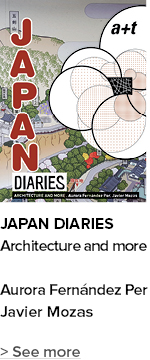
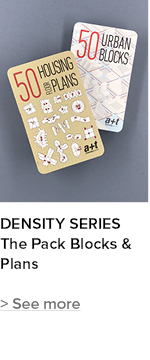

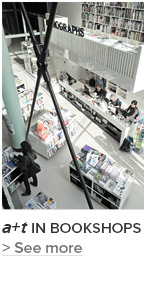
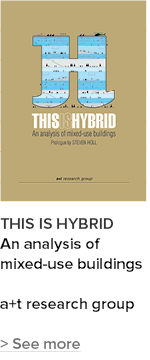


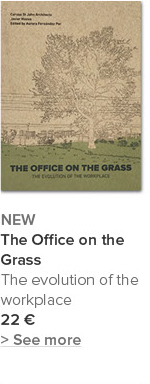
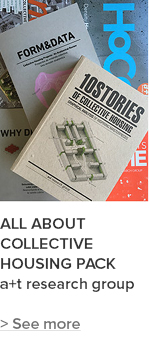
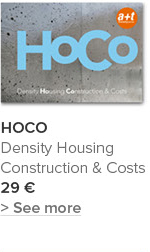
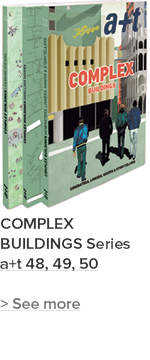

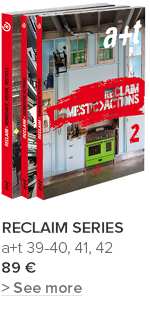
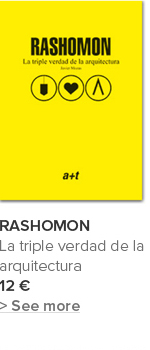
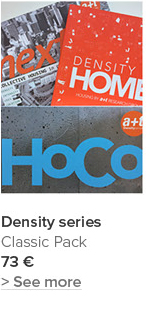





 I've read and agree to
I've read and agree to 


